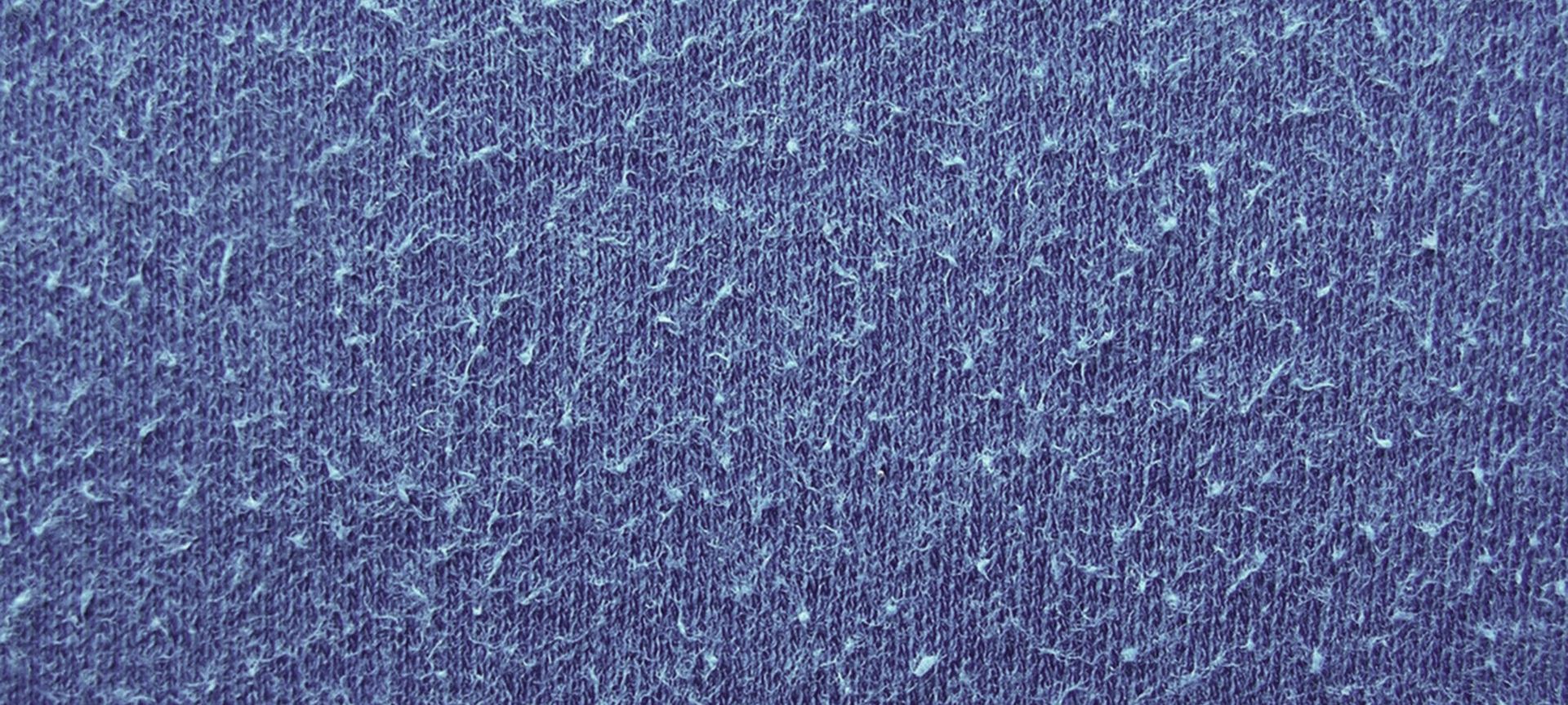Understanding fabric pilling

A ‘pill’ or more commonly known as a bobble, fuzz ball, or lint ball is a small ball of fibres that form on the face of a piece of fabric. It is caused by abrasion on the surface and is considered unsightly as it makes fabrics look worn.
Causes:
Loose fibres have a natural tendency to move to the surface of a piece of fabric, where they are subject to friction, this causes the fibres to twist together into small balls. Fibres that are still secured to the fabric are also twisted into the ball, which causes the pill to be secured to the surface of the fabric.
Friction is caused in the normal course of people using the furniture, rubbing against the surface of the fabric. Laundering also causes friction – washing machines agitate fabric, causing the surfaces to rub together.
Pilling is more noticeable on synthetic fibres. This is mainly because natural fabrics shed loose fibres easily and less noticeably, while man-made fibres are extremely strong, so the pills are anchored strongly to the fabric.
Transfer pilling is when the pilling is a different colour to the main base fabric. This occurs when two fabrics have pilled together. Clothing, throw rugs or cushions are normally the cause.
The fabric is high quality, so why is it pilling?
It is important to note that pilling is not a fabric defect or fault. Pilling is a normal occurrence caused by every day wear and tear, and does not affect the durability or functionality of the fabric.
A simple comparison is that of new carpet. Once installed, the new fibres come to the surface during the first few months. This is normal and will reduce over time.
Will pilling fabric be replaced?
Consumers are often concerned that pilling means the fabric is wearing away, or that is not of good quality, this is not the case. As pilling is not a fabric defect or fault it is not covered under warranty.

Solutions to remedy pilling:
When you know why textiles pill, you can take the right steps to remedy the problem. A quick and cost effective option is a pill shaver, available in most sewing stores. There are also pill combs that performs the same task manually.
Pilling is most likely to occur on loosely knitted fabrics where the fibres have a lot of room to interact, and this has nothing to do with fibre quality – even high-quality fibres can pill.
If pilling reoccurs, it can simply be shaved off again. This may occur several times, but the pilling will diminish and eventually cease once the excess fibres are removed.
Fabrics that are less likely to pill:
All fabrics will pill to some extent however, there are fabrics that are less likely to pill.
Smooth, tightly woven fabrics and fabrics made from tightly twisted yarns are less likely to pill, because the fibres are held tightly in the cloth.
When a fabric is made from more than one fibre type, where one fibre is strong and one is weak (for example, poly cotton) pilling will be more noticeable, because the weaker fibre wears and breaks, while the stronger fibre holds the pills to the cloth.
Some fabrics have been coated or singed through the manufacturing process but ultimately if you start seeing pills on your new fabric, don’t panic as they are easily removed as mentioned above.
Aftermarket Treatments:
Stain repellent treatments applied to fabric after it is manufactured can also promote pilling. They can also accelerate sun fade in some cases and also void warranty claims against the fabric manufacturer.
We suggest using a fabric that has been designed with inherent stain resistant properties, such as FibreGuard, in place of aftermarket treatments. FibreGuard offers a 5-year stain resistant warranty on Residential applications, and a 3-year stain resistant warranty in commercial installations on all upholstered furniture.
See the FibreGuard Warranty here.
